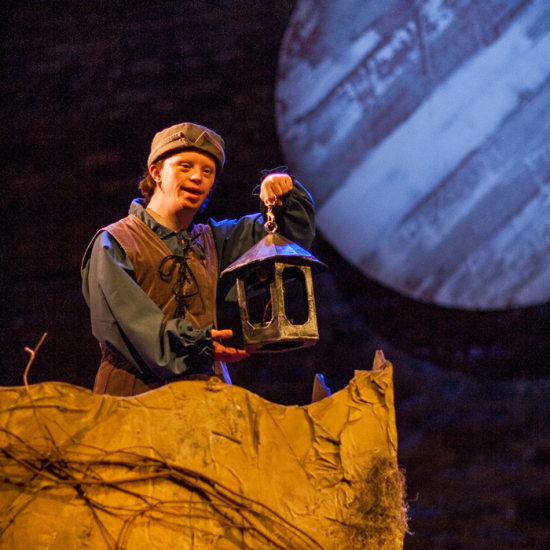
Interact Center for the Arts Demonstrates Social Value Using Research
As an organization run by professional, practicing artists, one of Interact Center for the Visual and Performing Arts' strengths is the creativity they bring to addressing challenges. For more than 25 years, Interact has been creating art that challenges perceptions of disability. Artistic and Executive Director Jeanne Calvit has grown the organization to a 40-member Theater Ensemble creating and presenting original works, an 80-member Visual Arts Studio showing original pieces throughout the region and sold around the world, and has produced education initiatives reaching students and adults. Interact’s vision of radical inclusion blends artists with and without disabilities across age, race, and cultural backgrounds.
Like many arts organizations, COVID-19 and changes to the funding landscape disrupted Interact’s in-person model. Facing shifts in how they work, the organization was able to build on and use the evaluation work they had done with Wilder Research to adjust and plan.
Broad input helped Interact describe the social value of their work.
When Interact first approached Wilder Research as a partner, Jeanne and Interact grant writer Sandy Moore wanted to formalize the organization’s vision to better explain their work and its outcomes for artists, audiences and funders.
The first step? Wilder Research and Interact created a theory of change to describe the social value that Interact artists, staff, audiences and board members expect from their work. Wilder held conversations with these groups to describe what Interact does and what impacts it expects to have.
These conversations allowed Wilder to develop a holistic understanding of Interact’s impact for everyone involved—artists, staff, partners, guest artists, and audiences. Together, we developed the theory of change. The process was valuable for Interact and they now have a useful tool for communicating the organization’s values and goals.
Researcher Ryan Evans worked with the Interact team to gather the necessary input and present it in a useful way. Sandy Moore said, “He was good at eliciting information and using it to adjust. We looked at the theory of change and thought, ‘Oh my gosh, that’s what I’ve been trying to say!'"
11% of Minnesotans report having a disability. That's more than 600,000 people. By spotlighting the work of artists with disabilities, Interact helps Minnesota become more inclusive and equitable for residents with disabilities.
Learn more about Interact Center for the Visual and Performing ArtsProgram evaluation becomes a tool for engagement and storytelling.
Wilder then partnered with Interact to embed evaluation into projects, like a unique school residency with the Mississippi Creative Arts School. Interact artists partnered with artists without disabilities to teach art skills to third- and fourth-grade students.
They knew this approach was working for artists: Interact’s artists developed their teaching skills while artists without disabilities learned about disability by working side-by-side with Interact’s artists. But they also wanted to understand how engaged the students were and collect some stories about the work to share with their funder.
According to Jeanne, “Wilder came up with creative ways to measure how engaged the students were and bring back success stories, like quotes from everyone involved. We need to report data, but in working with Wilder Research, we discovered this could be stories and quotes from students and artists. We started to see we could collect data in a meaningful way. Now story collecting is a big part of our process.”
Download an infographic that shows how students and artists benefited from Interact’s education programming.

Wilder came up with creative ways to measure how engaged the students were and bring back success stories. ... We started to see we could collect data in a meaningful way. Now story collecting is a big part of our process.
Building capacity to collect and use data and stories.
In 2021, Wilder built an easy-to-use database and provided training so Interact can continue to collect and tell stories about the organization’s social value. Using the surveys we’d developed together, Interact now manages the evaluation data and story collection on their own.
Throughout this partnership, Interact and Wilder Research have worked together to look at the data and make meaning in context in a way that engages their funders and donors and makes Interact artists proud.
Wilder’s Ryan Evans continues to support Interact as the work evolves: “I love to see our partners take on the responsibility of evaluating their own work. To us, it’s a sign that the partnership has helped them grow confident in working with data—and that they are committed to using data to improve what they do.” Now, Interact builds evaluation into every grant they write as a way for them to continue to embrace their mission.
Wilder’s work has been transformational. For each evaluation project, they drill down to what is important about the work: who benefits, who grows, what aspects of the opportunities had the greatest impact, how did the work change perceptions, and how did the work support artistic excellence.
Learn how research and evaluation can help your arts organization show the social value of your work.